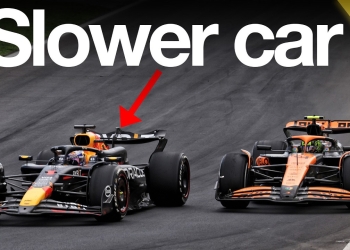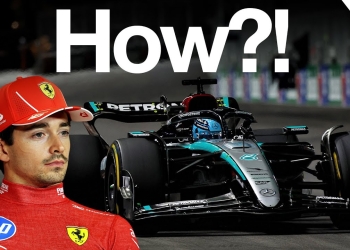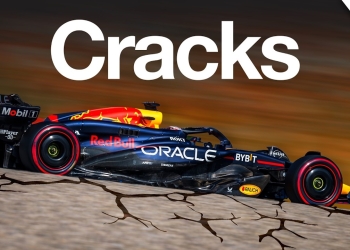The Perplexing Decline of Mercedes' Formula 1 Dominance
In the high-octane world of Formula 1, fortunes can change as swiftly as a pit stop. Just a few months ago, Mercedes seemed to have rediscovered its winning formula, claiming victory in three out of four races before the summer break. This resurgence, highlighted by the introduction of a new front wing, had many believing the Silver Arrows were back on track to challenge Red Bull's supremacy. However, as the season progressed, that promising run has faded into memory, leaving fans and pundits alike wondering: what happened to Mercedes' winning form?
The narrative of Mercedes' 2023 season is one of peaks and valleys, with the team's performance fluctuating dramatically from circuit to circuit. To understand this rollercoaster ride, we need to delve into the technical intricacies and strategic decisions that have shaped their campaign.
The Rise and Fall of the "Magic" Front Wing
The turning point for Mercedes appeared to be the introduction of a new front wing at the Monaco Grand Prix in late May. This aerodynamic upgrade, which Red Bull team principal Christian Horner referred to as "key" to Mercedes' progress, seemed to unlock a new level of performance for the W14 chassis. The impact was immediate and impressive:
- George Russell secured pole position in Canada
- Lewis Hamilton claimed victory at Silverstone
- The team locked out the front row at the Hungarian Grand Prix
However, it's crucial to note that while the front wing undoubtedly improved the car's performance, Mercedes' success during this period wasn't solely attributable to raw pace. Circumstances often played in their favor:
"Russell won in Austria thanks to the late collision between Max Verstappen and Lando Norris, inheriting the victory due to his strong run to third prior to that."
At Silverstone, strategic errors by McLaren arguably cost them a win, despite Mercedes locking out the front row. These results, while impressive, masked underlying issues that would soon resurface.
Click here to preview your posts with PRO themes ››
The Floor Conundrum
Following the Belgian Grand Prix, Mercedes introduced an upgraded floor design. This modification, intended to increase downforce and improve overall performance, paradoxically coincided with a downturn in results. The team struggled with consistency, balance, and tire management – issues that had plagued them earlier in the season but seemed to have been resolved.
The problems first became apparent during practice sessions at Spa-Francorchamps. Lewis Hamilton reported that the car "wasn't feeling particularly strong," leading the team to revert to the old floor specification for qualifying and the race. While this decision helped secure a victory for Hamilton, it raised questions about the efficacy of the upgrade.
Subsequent races at Zandvoort, Monza, and Singapore saw Mercedes struggling to match the pace of not just Red Bull, but also Ferrari and McLaren on occasions. The team found itself grappling with a car that could be quick over a single lap but struggled to maintain consistent performance over a race distance.
A Car of Jekyll and Hyde Tendencies
Perhaps the most perplexing aspect of Mercedes' current form is the car's extreme sensitivity to conditions and setup changes. George Russell described this phenomenon with a mix of frustration and bewilderment:
"In Baku, I was 1.5 seconds off the pace early on, then in the last 20 laps I was a second quicker than the leaders – and the only thing that changed was going from medium to hard tires."
While Russell's assessment might be slightly exaggerated, it highlights a fundamental issue with the W14: its performance window is incredibly narrow. Small changes in track temperature, tire compound, or even from one set of tires to another can result in dramatic swings in lap time.
This inconsistency makes it incredibly challenging for the drivers to build confidence in the car and for the engineers to optimize setups. It's a problem that seems to transcend the debate over old versus new floor designs, suggesting deeper underlying issues with the car's overall concept.
Click here to preview your posts with PRO themes ››
Looking Ahead: Can Mercedes Salvage Their Season?
As the Formula 1 circus heads into the final stretch of the 2023 season, Mercedes finds itself at a crossroads. Team principal Toto Wolff has confirmed that a new floor design is in the works for the United States Grand Prix in Austin, but whether this will be the silver bullet the team needs remains to be seen.
The challenges facing Mercedes are multifaceted:
- Understanding the root cause of their performance inconsistencies
- Developing upgrades that work across a wider range of circuits and conditions
- Regaining the confidence of their drivers in the car's capabilities
- Closing the gap to Red Bull while fending off resurgent rivals like Ferrari and McLaren
It's a tall order, but one that this eight-time constructors' champion team is more than capable of tackling. The question is whether they can do so in time to salvage their 2023 campaign and, more importantly, set themselves up for a title challenge in 2024.
As the season progresses, all eyes will be on the Silver Arrows. Will they recapture the magic that saw them dominate the sport for nearly a decade, or is this the beginning of a new era in Formula 1 where Mercedes must redefine its place in the pecking order? Only time – and the relentless pursuit of milliseconds – will tell.









